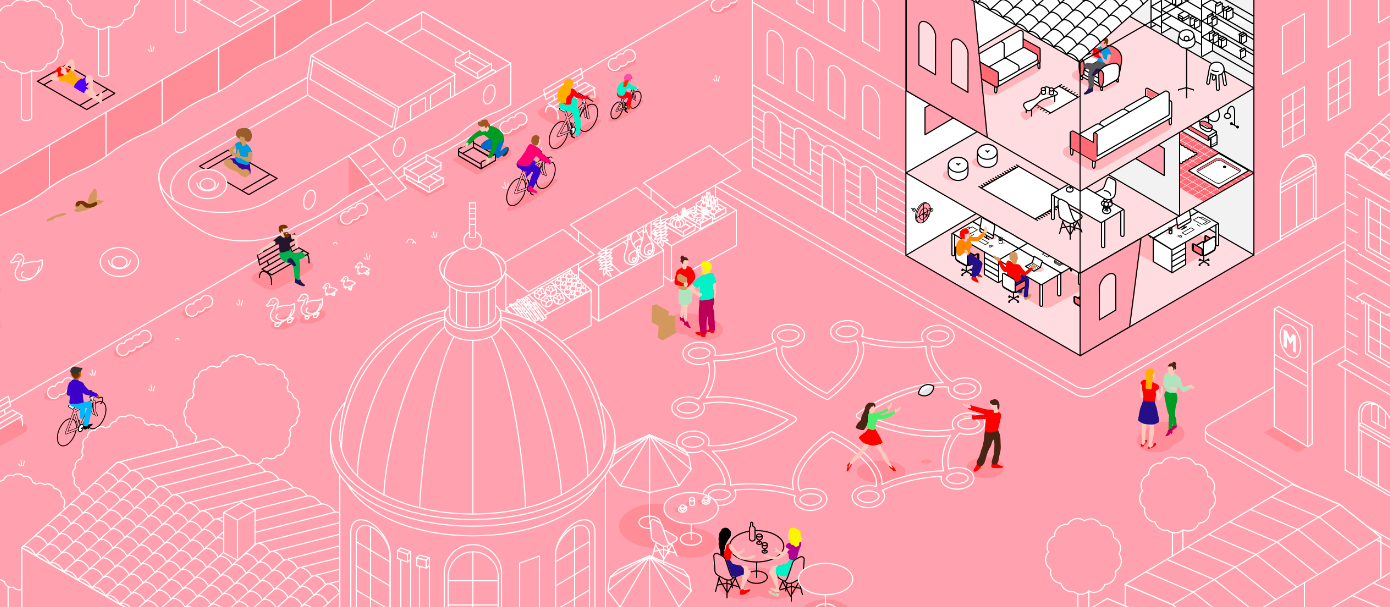
Crowdbuilding: Let’s Put Future Owners at the Heart of Building Design
avril 23, 2018 — Uncategorized
A home, for the people who live inside it, is far more than a surface that they own or rent, or the address where they are domiciled. It is a place that is part of their identity, the place where they must feel at home. Yet, in 2018, although we can personalize almost everything – shoes, smartphones, even cars – the offer in the primary housing market remains standardized in our cities, causing frustration and unhappiness. In France, for instance, 72% of the people willing to buy a property fear not to find a home matching their wishes.
There is one way to change things up: asking people their wants and needs. The solution derived from this basic principle is crowdbuilding: allowing future owners of a new building to be deeply involved in the design of their home, so that tailored, affordable, sustainable housing is produced.
Producing tailored housing thanks to digital technology
Digital tools are very useful for implementing crowdbuilding : they help reach people and assist them in the expression of their wishes. For instance, the online platform we have developed at Habx – a marketplace matching people’s wishes with the production capacity of developers we are working with – relies on three tools : Localizer, Pricer and Optimizer.
Through Localizer, future owners can find the city and the neighborhood suiting their lifestyle, their daily commute and their budget. They can then join the project of one of the developers we have partnered with. After that, they can express their wishes about the design of their ideal home: number and size of the rooms, interior design, floor, sun exposure, outdoor areas… they have access to numerous parameters. Thanks to Pricer, they can instantly see the impact of their choices on the price of their future apartment. Finally, Optimizer enables to match the expressed wishes to the global blue print of the building created by the architect selected by the developer.

Shaping sustainable buildings and cities
The crowdbuilding process involves future owners at an early stage of the real estate project, so that communities are created, which are having an emotional attachment to the buildings where they are living. Consequently, crowdbuilding promotes the purchase of the apartments by owners-occupiers rather than by investors, which implies that the building is going to be well maintained. It makes also the creation of shared spaces (vegetable garden, gym, coworking spaces, etc.) easier thanks to interactions with and between the future owners, who can vote for the type of space they prefer. It is a great way to enhance interactions between them and to guarantee the best adaptation of the building to new uses.
Moreover, building homes suiting people’s needs and wants, in neighborhoods suiting their lifestyle implies more human and more friendly places, but also less commuting, and thus more time for your family, your friends or your hobbies.
Making homeownership easier
For a developer, using the crowdbuilding method means less marketing risk, less marketing costs and an optimized timing of the project thanks to the digital coproduction it allows. The savings made allow to lower the price of the apartments, so that future owner’s purchasing power is increased and people with lower borrowing capacities can afford to invest in a home. Crowdbuilding may thus be used as an efficient solution to tackle the social issues created by the rising real estate prices in our metropolises.
Crowdbuilding may have an even deeper impact on the way cities are shaped. It may be the first step of larger urban crowdsourcing initiatives, thanks to the application of its principles on a larger scale and thanks to the data gathered about the future inhabitants of a neighborhood or a city, which may help local authorities identify the public facilities that should be built.
At Habx, we have a firm conviction: thanks to crowdbuilding, all parties involved in city design can invent the 21st century real estate industry, a more customer-centric and a demand-driven industry. Let’s imagine it together!
